Stampa sullo schermo ecologica è un modo creativo per realizzare disegni unici pur essendo gentili con il pianeta. Utilizzando materiali sostenibili e riducendo i rifiuti, Puoi goderti l'arte della stampa senza danneggiare l'ambiente.
Questa guida ti aiuterà a capire tutto sulla stampa ecologica, Da quali strumenti e materiali hai bisogno di suggerimenti per rendere il processo regolare ed efficiente. Che tu stia appena iniziando o cerchi di rendere il tuo processo di stampa più sostenibile, Troverai tutti i passaggi qui per creare bellissime stampe in modo verde.
Saltiamo e iniziamo a stampare in modo responsabile!
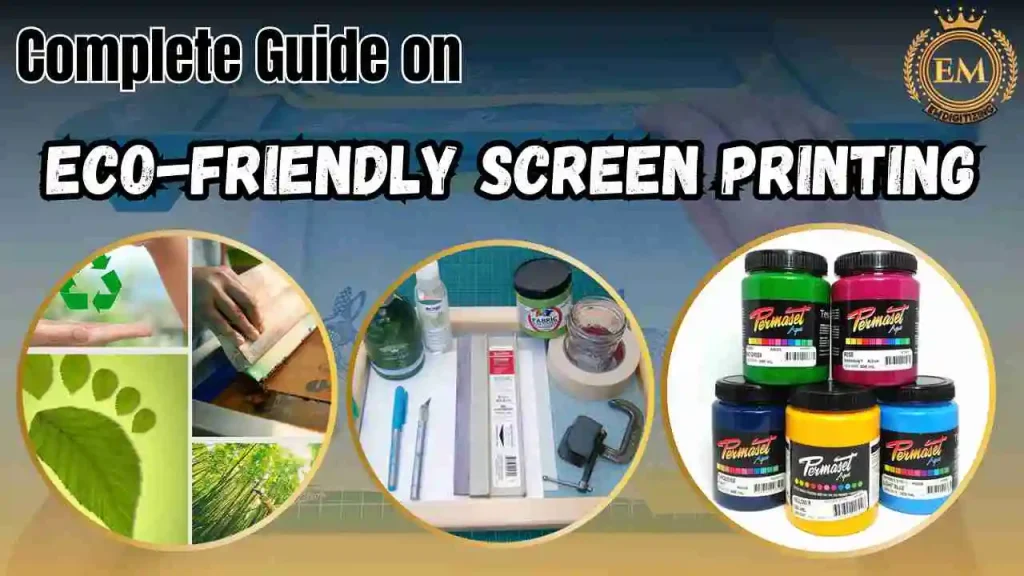
Guida completa alla serigrafia ecologica
Forniture chiave per la stampa screening ecologica
Scegliere le provviste giuste per stampa screenica ecologica è il fondamento della creazione di progetti responsabili dell'ambiente. Ecco un elenco di materiali essenziali che si allineano con pratiche sostenibili:
- Inchiostri a base vegetale
- Squeegee compostabili
- Schermi a maglie riutilizzabili
- Opzioni di tessuto sostenibile
- Stencil durevoli e lavabili
- Agenti di pulizia senza sostanze chimiche
1. Inchiostri a base vegetale
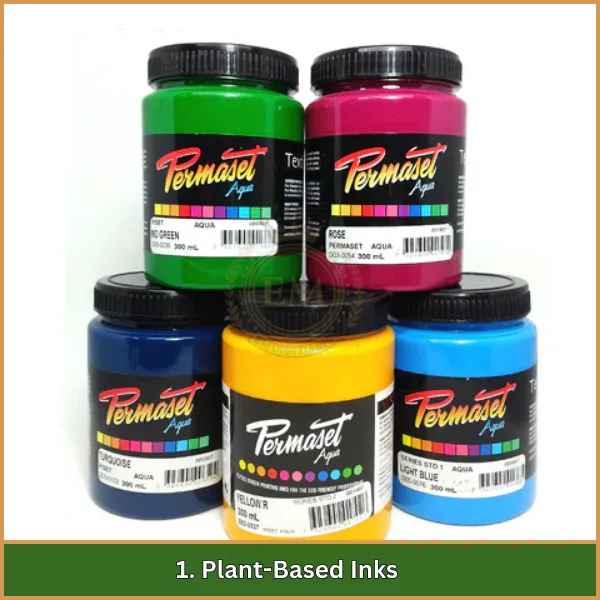
Dì addio agli inchiostri chimici dannosi e ciao alle alternative a base vegetale! Questi inchiostri sono realizzati con oli naturali e pigmenti, Garantire stampe vibranti senza compromettere il pianeta.
Suggerimento professionale: Opta per Permaset Aqua per una gamma di colori ecologici che si distinguono.
2. Squeegee compostabili
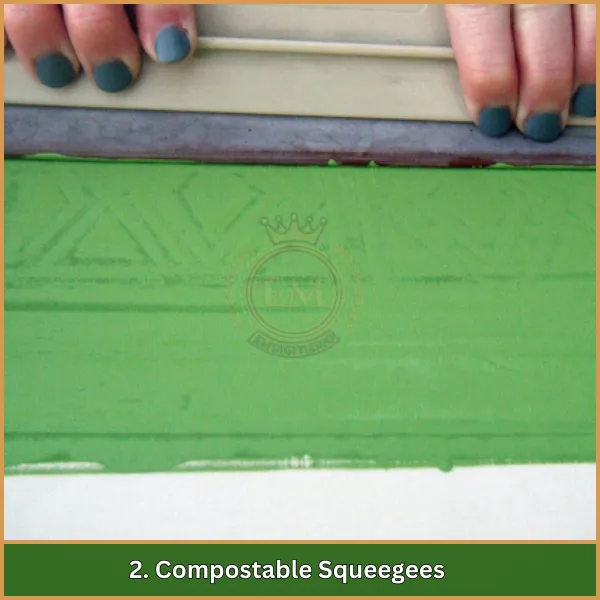
I tradizionali spremute di plastica sono fuori: si trovano gli spremere compostabili! Realizzato con materiali come il bambù, Questi squilli sono robusti durante l'uso e delicati sull'ambiente quando è il momento di smaltirli.
Perché il bambù? È rinnovabile, durevole, e compostabile.
3. Schermi a maglie riutilizzabili
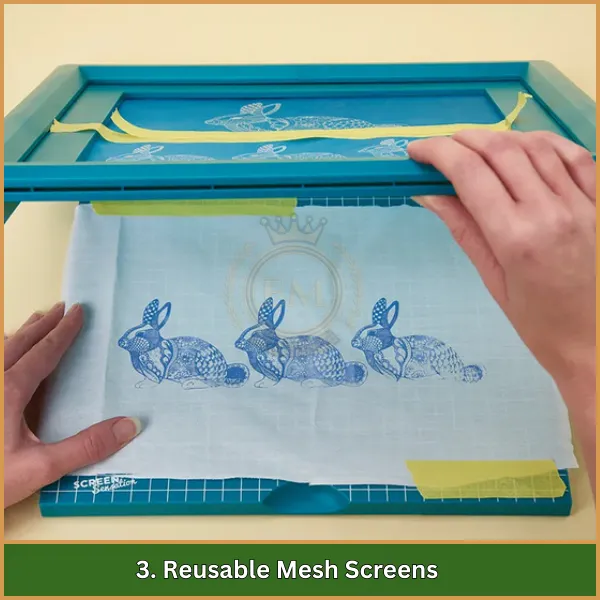
Un approccio più verde alla stampa dello schermo prevede schermate di mesh riutilizzabili. Questi schermi sono facili da pulire e ricoprire, Ridurre gli sprechi e risparmiare denaro a lungo termine.
Scelta migliore: Gli schermi in alluminio abbinati a mesh poliestere offrono il perfetto equilibrio tra durata e riusabilità.
4. Opzioni di tessuto sostenibile
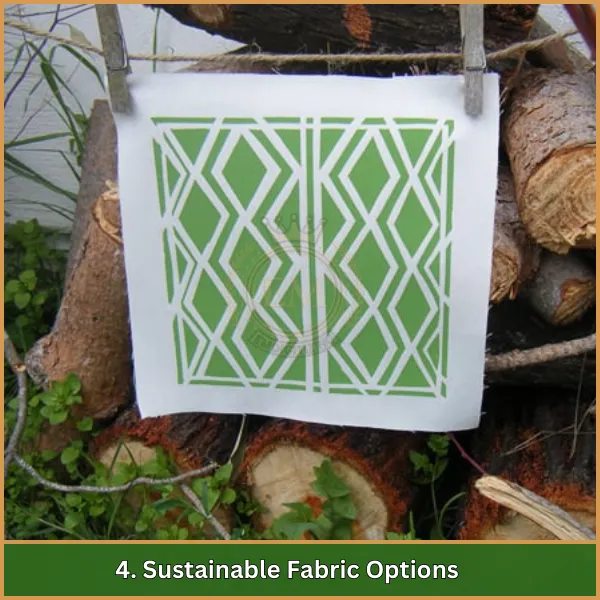
Il tessuto che scegli è importante quanto l'inchiostro. Le opzioni sostenibili come il cotone organico o le fibre riciclate supportano pratiche responsabili ecologiche e forniscono una sensazione migliore per il prodotto finale.
Raccomandazione professionale: Cerca tessuti etichettati con certificato GOTS per l'eco-compatibilità garantita.
5. Stencil durevoli e lavabili

Gli stencil lavabili ti aiutano a ridurre i rifiuti mantenendo coerenza nei tuoi progetti. Sono facili da pulire e riutilizzare, rendendoli un must per la stampa sostenibile.
Miglior materiale: Gli stencil metallici durano più a lungo e possono resistere a un uso frequente.
6. Agenti di pulizia senza sostanze chimiche

La pulizia dopo la stampa non deve danneggiare l'ambiente. Le detergenti senza sostanze chimiche a base di ingredienti naturali assicurano una cassaforte, pulizia efficace senza inquinamento delle forniture idriche.
Scelta ecologica: I detergenti a base di agrumi come Franmar forniscono risultati eccellenti con tossicità zero.
Processo passo-passo per la stampa screening ecologica
È un modo creativo e sostenibile per produrre disegni sbalorditivi minimizzando il danno ambientale. Seguendo questi passaggi dettagliati, Puoi ottenere risultati professionali senza compromettere il tuo impegno per la sostenibilità.
1. Crea la tua opera d'arte
La fondazione di qualsiasi Progetto di stampa sullo schermo è il design. Usa software di progettazione grafica come Adobe Illustrator, CorelDRAW, o canva per creare la tua opera d'arte. Concentrati sulla pulizia, Design audaci con dettagli minimi per semplificare il processo di stampa e ridurre l'utilizzo dell'inchiostro. Una volta che il tuo design è completo, Stampalo su un film trasparente, che verrà successivamente utilizzato per creare lo stencil.
2. Prepara il tuo schermo
Seleziona uno schermo a rete riutilizzabile in poliestere o in acciaio inossidabile e collegala a un telaio in alluminio riciclabile. Applicare un'emulsione ecologica uniformemente sullo schermo usando un coater scoop. Questa emulsione aiuterà a creare lo stencil bloccando le aree dello schermo. Posizionare lo schermo rivestito in un buio, ambiente senza polvere per asciugare completamente. L'asciugatura può richiedere alcune ore a seconda del tipo di emulsione e della temperatura.
3. Trasferisci il design
Posiziona il film trasparente con il tuo design sullo schermo anticolti secchi. Proteggerlo con fermezza, Garantire che non si sposti durante l'esposizione. Usa una sorgente di luce UV per esporre lo schermo per il tempo consigliato in base all'emulsione. La luce indurisce l'emulsione in aree non coperte dal design, Mentre le aree coperte rimangono morbide. Una volta esposto, Sciacquare delicatamente lo schermo con acqua per rimuovere l'emulsione morbida, Rivelando il tuo stencil.
4. Allineare per la stampa
Imposta l'area di stampa posizionando lo schermo preparato sul tessuto o sul materiale in cui si prevede di stampare. Assicurarsi che lo schermo sia strettamente protetto e allineato con il materiale per evitare lo smuding o il mal di posto. Un posizionamento accurato è cruciale, Soprattutto quando si stampano più articoli o si utilizzano design a più livelli.
5. Stampa con inchiostro sostenibile
Uso stampa sullo schermo sostenibile inchiostro, come inchiostri a base d'acqua o vegetale, per rimanere ecologico. Questi inchiostri sono liberi da sostanze chimiche dannose come PVC e ftalati, rendendoli più sicuri per l'ambiente e gli utenti. Applicare l'inchiostro nella parte superiore dello schermo, Quindi usa uno spremuto compostabile per attirare uniformemente l'inchiostro attraverso lo stencil. Garantire una pressione costante per ottenere un trasferimento uniforme del design sul materiale.
6. Asciutto e cura
Dopo la stampa, Lascia che i tuoi progetti si asciugano in modo naturale, o utilizzare una pressione di calore a bassa energia o unità di indurimento per accelerare il processo. La cura adeguata garantisce i legami di inchiostro con il materiale, Rendere il design più resistente e resistente all'usura e al lavaggio. Se si utilizza il calore, Mantenere bassa la temperatura per ridurre il consumo di energia e proteggere il tessuto.
7. Pulire in modo responsabile
La pulizia dopo la stampa è una parte essenziale del processo. Utilizzare biodegradabile, soluzioni di pulizia non tossica per lavare lo schermo, tergipavimento, e altri strumenti. Evita di lasciare asciugare l'inchiostro sullo schermo, Poiché ciò può rendere la pulizia più difficile e abbreviare la durata dello schermo. La pulizia adeguata non solo garantisce che i tuoi strumenti durino più a lungo, ma mantiene anche il processo di stampa sostenibile.
8. Archivia per uso futuro
Una volta che tutto è pulito e asciutto, Conserva i tuoi schermi, racle, e altri strumenti in un rafforzamento, posto asciutto. Riutilizzare i materiali riduce gli sprechi e risparmia denaro, Rendere il processo di stampa dello schermo più efficiente e rispettoso dell'ambiente nel tempo.
Suggerimenti per ridurre al minimo i rifiuti nella stampa dello schermo
Quando si tratta di Stampa sullo schermo ecologica, Ridurre al minimo i rifiuti è un modo semplice ma impatto per ridurre l'impronta ambientale. Ecco come puoi farlo:
- Attenersi a strumenti riutilizzabili come le schermate di mesh, cornici, e stencil che possono essere puliti e utilizzati.
- Salva qualsiasi inchiostro rimanente dopo ogni sessione, poiché può essere riutilizzato per progetti futuri o misto per creare nuovi colori.
- Solo mescolare e utilizzare la quantità esatta di inchiostro necessaria per evitare di sprecare materiale in eccesso.
- Passa ai prodotti di pulizia biodegradabili per lavare gli strumenti senza danneggiare il pianeta.
- Stampa su tessuti sostenibili, come cotone organico o materiali riciclati, Promuovere pratiche più verdi.
- Trasforma gli errori o il tessuto di scarto in stampe di prova o campioni invece di gettarli fuori.
- Organizzare i progetti attentamente sul materiale per sfruttare al meglio ogni pollice e ridurre i rifiuti.
- Condividi le conoscenze sulla riduzione dei rifiuti con gli altri per incoraggiare le abitudini di stampa sostenibili.
Incorporando queste pratiche, puoi fare il tuo processo di stampa serigrafica più pulito, più verde, e più efficiente.
Linea di fondo
La stampa screenica ecologica ti consente di creare disegni sbalorditivi pur rimanendo gentili verso il pianeta. Con materiali sostenibili e metodi ponderati, Puoi avere un grande impatto senza compromettere la qualità.
Hai bisogno di arte vettoriale professionale per portare le tue stampe al livello successivo? EMDigitalizzazione ti ha coperto! Forniamo servizi artistici vettoriali di alta qualità a prezzi imbattibili, con inversione di tendenza e risultati garantiti. Puoi persino visualizzare in anteprima il tuo design prima che sia finalizzato. Più, Come cliente per la prima volta, godrai di un'esclusiva 50% sconto sul tuo ordine!
Non aspettare—contattaci oggi E diamo vita alla tua visione creativa!
Domande frequenti
È un metodo di stampa sostenibile che utilizza inchiostri non tossici, strumenti riutilizzabili, e materiali riciclati per ridurre al minimo i danni all'ambiente.
A differenza della tradizionale stampa dello schermo, Metodi eco-compatibili Evitare sostanze chimiche tossiche, ridurre gli sprechi, e usa meno energia, Rendere il processo più sicuro per le persone e il pianeta.
Aiuta a proteggere l'ambiente, garantisce condizioni di lavoro più sicure, e appelli a clienti ecologici, boosting your brand’;immagine di s.
sì, La stampa ecologica funziona su molti materiali come il cotone biologico, canapa, e tessuti riciclati, Fornire flessibilità per progetti diversi.
